821.18 Noxious Weeds
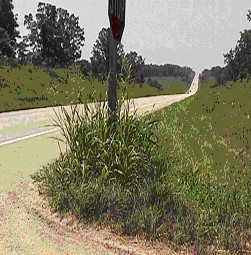
Definition: State law requires noxious weeds to be controlled. In Missouri, twelve weeds are currently identified as noxious: Johnson grass, Purple Loosestrife, Field Bindweed, Multiflora Rose, Marijuana, Musk Thistles, Scotch Thistles, Canada Thistles, Kudzu, Common Teasel, Cut-leaf Teasel and Spotted Knapweed.
Why:
1. Noxious weeds are required by state law to be controlled
2. Noxious weeds are competitive with desirable vegetation and may spread to adjacent properties
Primary Targets:
1. Johnson grass - Can be found statewide
2. Purple Loosestrife - Grows in wet areas, can infest banks of lakes, ponds and other bodies of water
3. Field Bindweed - Vining plant, grows along soil surface or will climb if objects are in its path
4. Multiflora Rose - Thorny shrub located in fencerows and in non-mowed areas

5.Marijuana- Eradicate this plant according to state law
6. Musk, Scotch and Canada Thistles ((3) Thistles) - Early spring and late fall treatment will give best results (rosette stage)
7. Teasel - A tall prickly plant with white (cut-leaf) or purple (common) egg-shaped flower head. It is a very troublesome weed that can readily spread.
8. Kudzu - A very aggressive fast-growing vine that can grow up to one foot per day
9. Spotted Knapweed - Primarily in the southern part of the state. It creates its own herbicide to kill off other plants.
Methods
A. Read the label
B. Calibration of equipment required before application
C. Recommended Products and Rates
D. PPE
Follow label recommendations for each product.
E. When to apply
Application in spring / summer to actively growing plants
F. How to apply
1. Handgun
2. Spray bar
3. Hand sprayer / Backpack
4. Injection sprayer
Special Recommendations:
Johnson grass - Avoid spraying native prairie grasses that look like Johnson grass. Johnson grass produces many seeds if allowed to head out. Treatment should be made prior to seed head emergence. Treatment should be made when plant is in boot stage to reduce seed production, generally in the 20-30 inch range. Make an effort to control all Johnson grass on right of way even if adjacent property owner does not make an effort. Repeated treatments will be required through growing season.
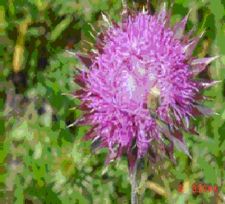
Thistles - Since all thistles are similar in appearance, it is difficult to identify one from another so spring blooming thistles should be the primary focus as many native thistles are fall bloomers. Best results are achieved when sprayed in early spring or late fall in the rosette stage. After thistles have bolted, they are very difficult to control. If evidence of weevils is present on the site, adjust spray scheduling accordingly. Contact your Roadside Manger for further information.
Multifora Rose - Best if sprayed in spring to early summer. Optimum time to spray is when it is at the flowering stage for best control.
Teasel - Best results are achieved when sprayed in early spring or late fall. After they have bolted they are difficult to control and the seeds will still germinate. Late fall applications with Perspective have proved effective to eliminate active rosettes and also address seeds germinating the following spring.
Kudzu - Best if sprayed in mid-late summer when Kudzu stores food in its roots. If sprayed in this stage, chemical translocates to roots for better control.
Table 821.18.1 Johnson Grass
| Herbicide | Broadcast Rate | Handgun Rate | Comments |
|---|---|---|---|
| Outrider | 1 oz. per acre | 1 oz. per 100 gallons | Use for spot treatment. Will control other vegetation. |
| Glyphosate | - | - | 1 gallon / 2 gallons water for use in a wiper applicator. |
Table 821.18.2 Musk, Canada and Scotch Thistle and Marijuana
| Herbicide | Broadcast Rate | Handgun Rate | Comments |
|---|---|---|---|
| DMA 4 IVM, Vastlan | 2 qt. per acre | 2 qt. per 100 gallons | Apply during rosette stage. |
| Glyphosate | - | 1 gallon per 100 gallons | Spot treatment after bolts. Will control other vegetation. |
| Escort XP | - | 1/2 oz. per 100 gallons | Add approved surfactant. |
| Method | 8 oz. per acre | 8 oz. per 100 gallon | Add approved surfactant. |
| Milestone | - | 5 oz. per 100 gallons | Add approved surfactant. |
| Perspective | 4.75 oz. per acre | 4.75 oz. per 100 gallons | Add approved surfactant. |

Table 821.18.3 Purple Loosestrife
| Herbicide | Broadcast Rate | Handgun Rate | Comments |
|---|---|---|---|
| Aquatic glyphosate | - | 1 gallon per 100 gallons | Add approved surfactant. |
Table 821.18.4 Multiflora Rose
| Herbicide | Broadcast Rate | Handgun Rate | Comments |
|---|---|---|---|
| Glyphosate | - | 2 gallons per 100 gallons | Spray to wet. Avoid runoff. |
| Krenite S | - | 2 quarts per 100 gallons | Spray to wet. Avoid runoff. |
| Perspective | 4.75 oz. per acre | 4.75 oz. per 100 gallons | Add approved surfactant. |
Table 821.18.5 Field Bindweed
| Herbicide | Broadcast Rate | Handgun Rate | Comments |
|---|---|---|---|
| 2,4-D, Garlon 3A or Element 3A | 2 qt. per acre | 2 qt. per 100 gallons | Add approved surfactant. |
| Milestone | 5 oz. per acre | 5 oz. per 100 gallons | Add approved surfactant. |
| Perspective | 4.75 oz. per acre | 4.75 oz. per 100 gallons | Add approved surfactant. |
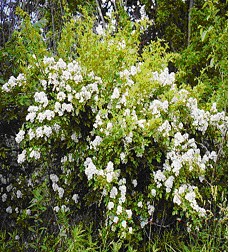 |
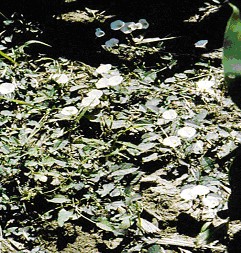 |
 |
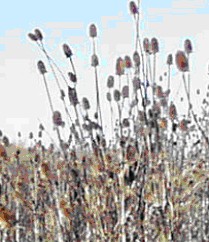 |

Table 821.18.6 Kudzu
| Herbicide | Broadcast Rate | Handgun Rate | Comments |
|---|---|---|---|
| Milestone | 7 oz. per acre | 7 oz. per 100 gallons | Add approved surfactant. |
| Perspective | 4.75 oz. per acre | 4.75 oz. per 100 gallons | Add approved surfactant. |
Table 821.18.7 Common and Cut-leaf Teasel
| Herbicide | Broadcast Rate | Handgun Rate | Comments |
|---|---|---|---|
| Escort XP | 1/2 oz. per acre | 1/2 oz. per acre | Add approved surfactant. |
| Method | 12 oz. per acre | 12 oz. per 100 gal. | Add approved surfactant. |
| Milestone | 5 oz. per acre | 5 oz. per 100 gallons | Add approved surfactant. |
| Perspective | 4.75 oz. per acre | 4.75 oz. per 100 gallons | Add approved surfactant. |

Table 821.18.9 Spotted Knapweed
| Herbicide | Broadcast Rate | Handgun Rate | Comments |
|---|---|---|---|
| Method | 8 oz. per acre | 8 oz. per 100 gal. | Add approved surfactant. |
| Milestone | 5 oz. per acre | 5 oz. per 100 gallon | Add approved surfactant. |
| Perspective | 4.75 oz. per acre | 4.75 oz. per 100 gallons | Add approved surfactant. |